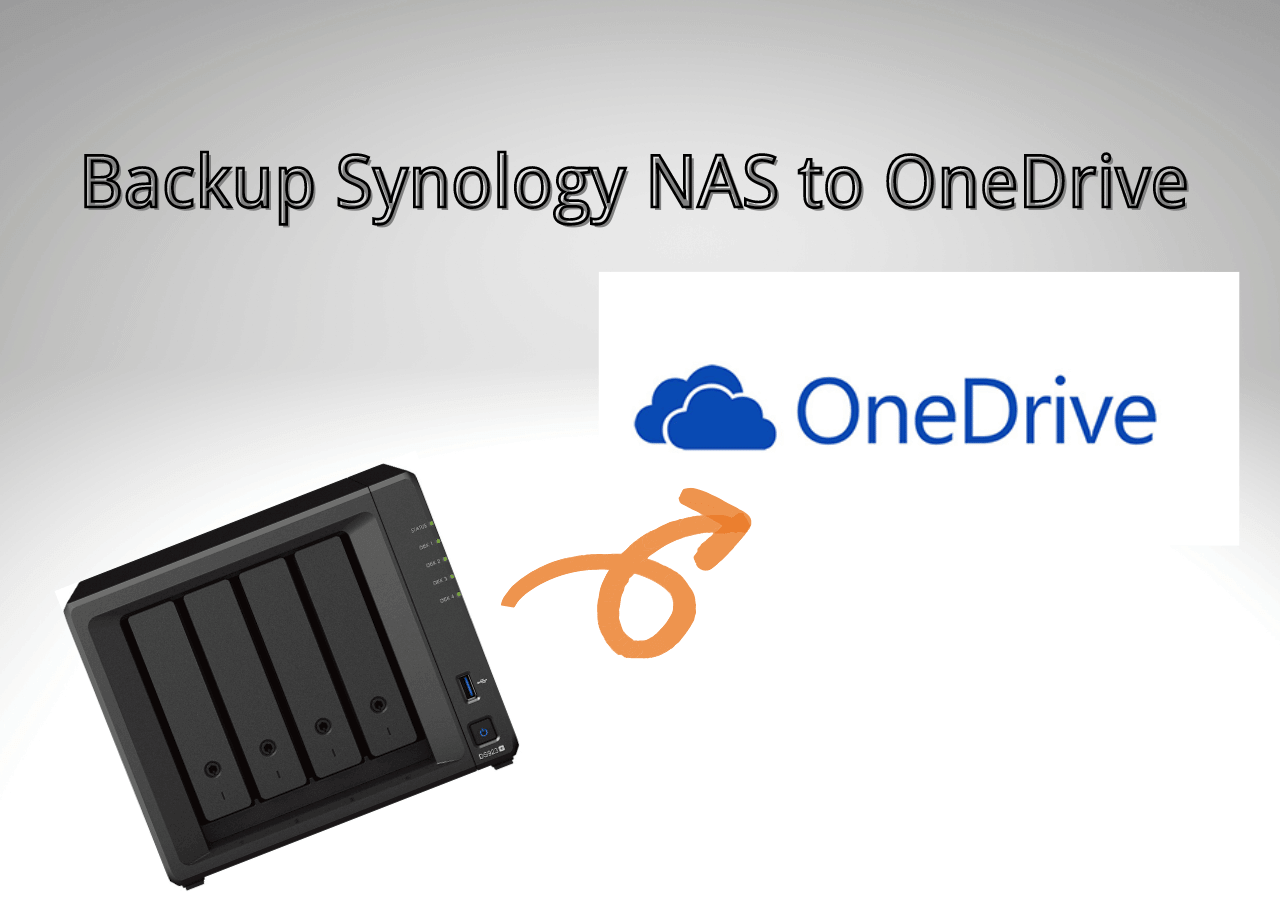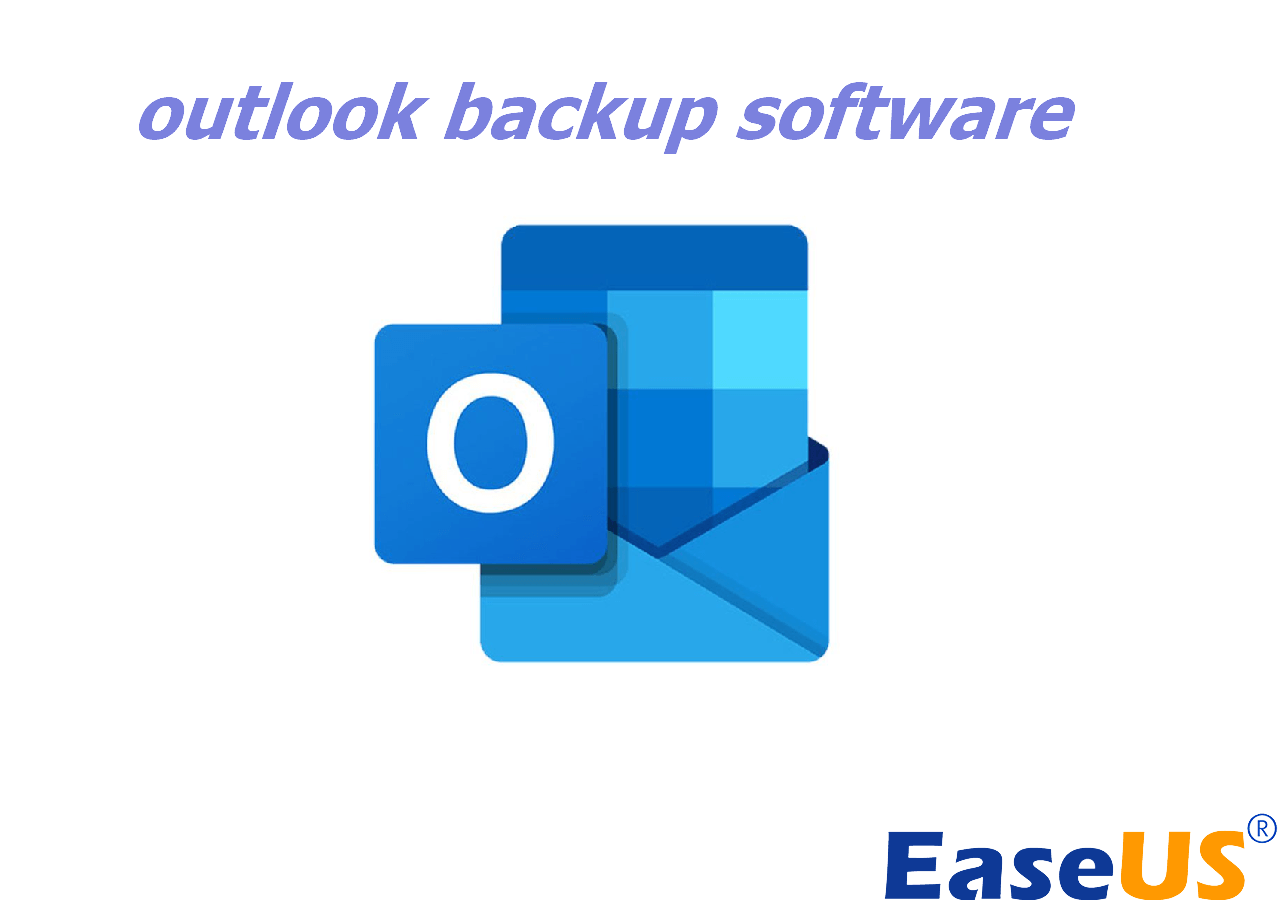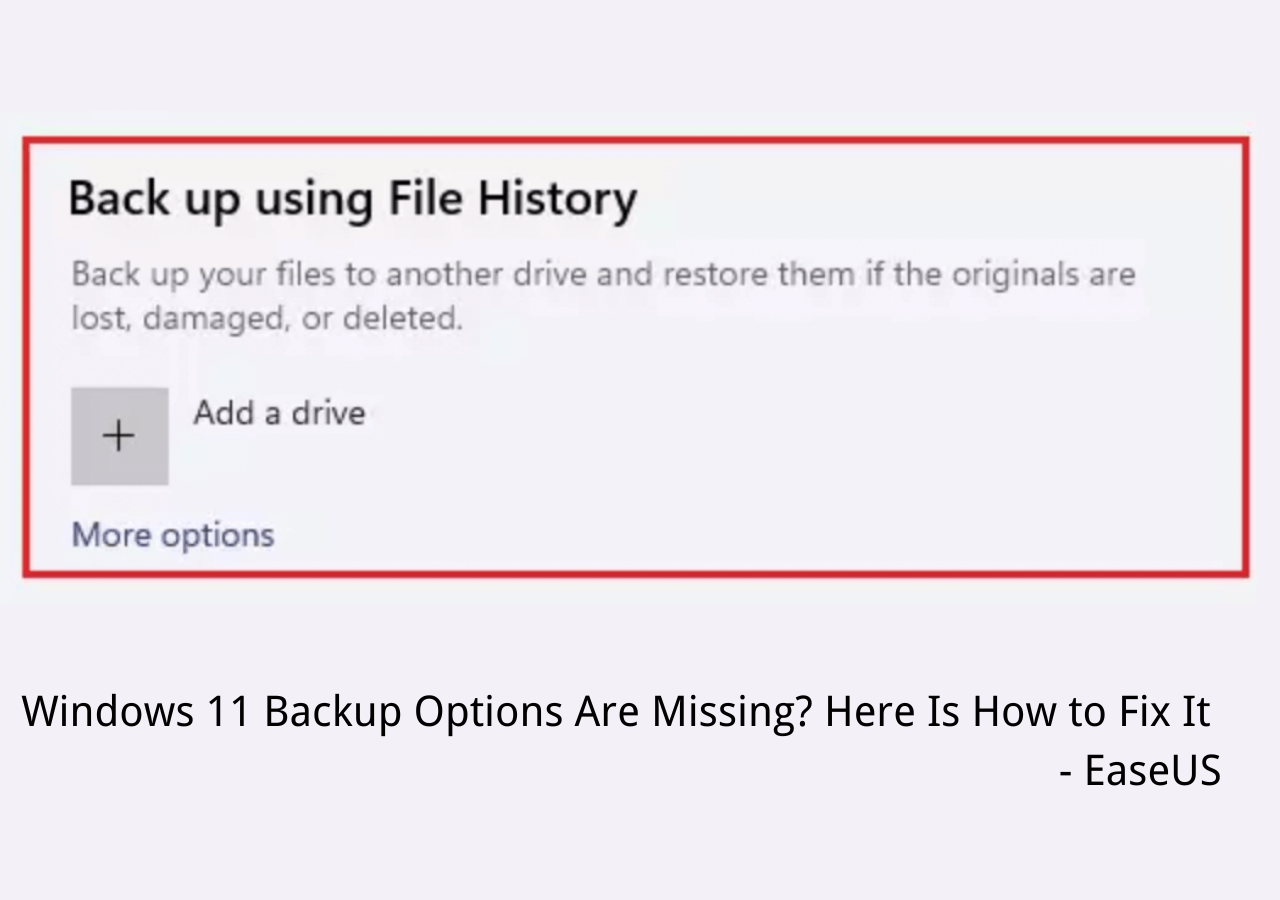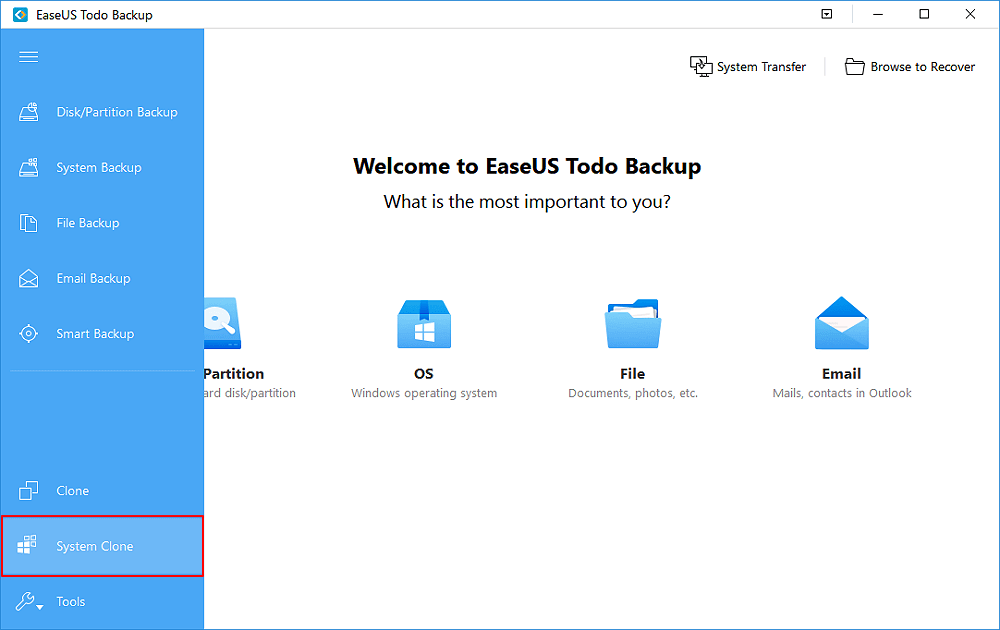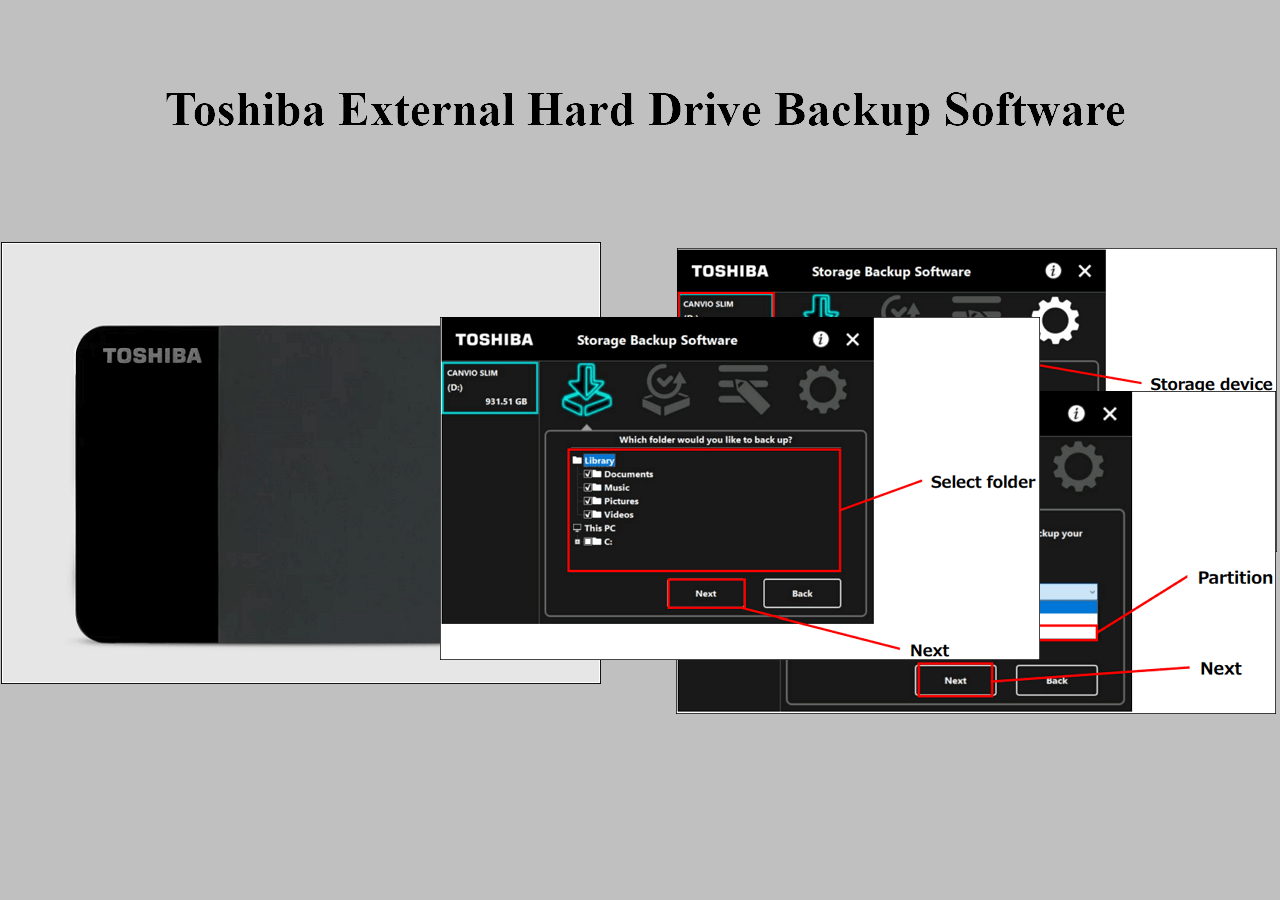Page Table of Contents
Windows 7 is still the most frequently used operating system, following Windows 10 and 11. According to recently released data, about 80% of computer users experienced a black or blue screen of death; some may give up all files and reinstall a new system. All your important files, like documents, videos, and photos, are gone in this case. You may feel regretful not backing up your files.
If you are still a Windows 7 user and worry that you might encounter such a dilemma. Don't panic. This article from EaseUS will tell you how to backup files in Windows 7 to external hard drive with 4 simple and free methods. Let's get started!
| ⚒️Methods | 👍Pros | 👎Cons |
|---|---|---|
| 1️⃣Using Auto Backup Software🔥 |
|
|
| 2️⃣Using Backup & Restore |
|
|
| 3️⃣Using Windows Easy Transfer |
|
|
| 4️⃣Manually Copying and Pasting |
|
|
Download EaseUS Todo Backup to help you back up files to external hard drive on Windows 11/10/8.1/8/7
Secure Download
What Files Should I Backup to External Hard Drive in Windows 7
Microsoft has ended Windows 7 extended security updates and technical support. Since Windows 7 ends its life, your Windows 7 computer will be more vulnerable. Given this, Hackers will fully use the vulnerabilities to attack your Windows 7 computer, and finally, you will lose your data or pay for Hackers. The WannaCry Virus is the best example. Therefore, it is very important to back up your files on a PC running Windows 7.
The problem is, What files should I back up? If I have 100GB of data on your Windows 7 computer, do I need to back up all of data? Definitely not. You just need to back up the essential data on your Windows computer. Here is a list:
- Personal files. The most important thing is to create a backup for your files. Generally speaking, you can find these files in C:\Users\Username on your Windows PC.
- AppData. The AppData folder is under C:\Users\Username. It is usually used to store an app's user-specific settings.
- Projects. If you are working on creative work, such as programming, video editing, photography, etc, back up these files, especially when it is in progress.
- Emails. If you use a desktop email, you may need to back up your emails.
In a nutshell, back up data you care about, whether it is your important files like family pictures, videos, music, settings for an application, or saved games.
4 Free Ways to Backup Files to External Hard Drive on Windows 7
After knowing what files need to be backed up on your computer, let's see how to back up files to an external hard drive or a USB drive on your Windows 11/10/8/7 computer. The following will show you the details. Find out a solution that suits you best.
- Notice:
- You must prepare an external drive with enough capacity to store the data.
Method 1. Using Auto Backup Software
If you want to back up files on a Windows computer, using professional Windows backup software is the best way out. This is because such a tool can let you enjoy many advanced backup features, such as Cloud backup, automatic backup, etc. To this end, EaseUS Todo Backup, a name that has to be mentioned in the backup field and one of the best free Windows 7 backup software, can meet your needs.
Secure Download
EaseUS Todo Backup Free is a simple, versatile backup and recovery program designed for Windows 11/10/8.1/8/7. It can help you automatically backup files, systems, disks, computer apps, etc., and backup Windows 7 to a USB drive. In addition, it can help you save your backups in various locations, including local or external drives, NAS, Security Zone, and Cloud.
Highlighted features of EaseUS Todo Backup:
- One-click backup and instant restore with high efficiency
- Clone a hard drive and image a hard disk easily & quickly
- Provide 250G free Cloud storage to store files or backups
- Install Windows on a new PC without an operating system
- Perform intelligent, full, incremental, differential backups
EaseUS Todo Backup can help back up 1000+ types of computer files and folders. It can meet your different needs, no matter what you want to do on your Windows computer, such as backup, imaging, cloning, transferring, upgrading disk, etc. Ensure you download it on your computer to help back up your files.
Here is how to back up files on a Windows computer via EaseUS Todo Backup.
Step 1. To begin the backup process, click the Select backup contents button.

Step 2. Four data backup categories are listed: File, Disk, OS, and Mail.

Step 3. Lists of both local and network files are shown on the left-hand side of the screen. Expanding the directory so that you can choose the files to back up.

Step 4. Follow the guidance on the screen and choose the place where you want to store the back up.
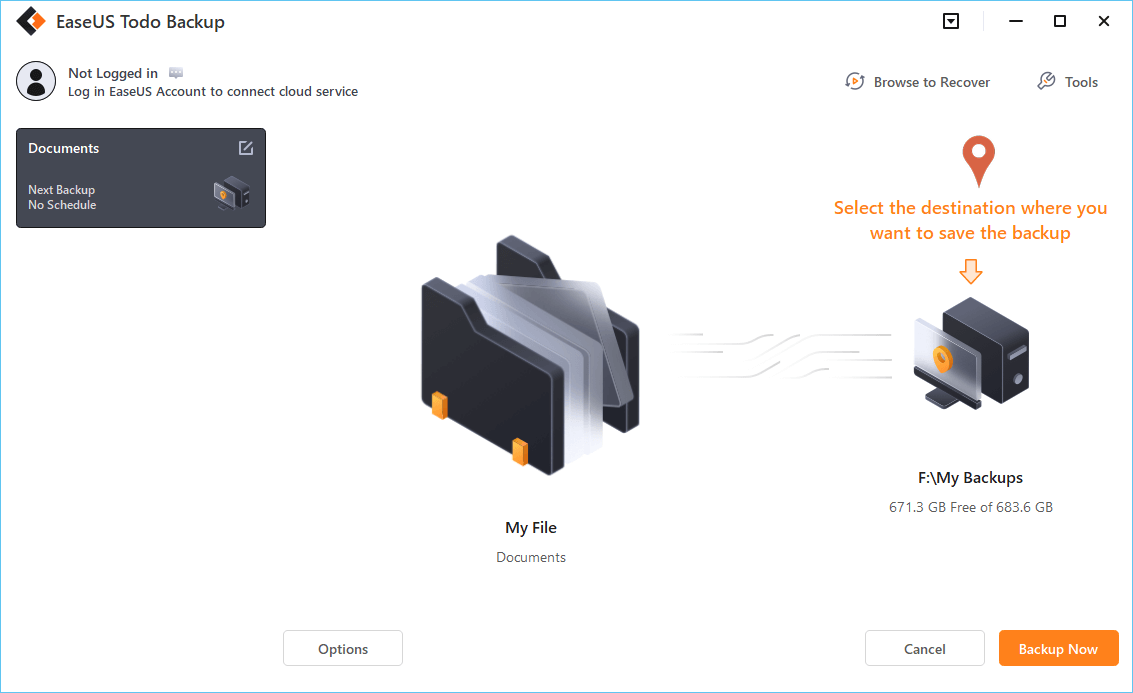
Make sure that the backup is encrypted and set the backup schedule by clicking Options in Backup Options. You can also choose to start the backup at a certain time in Backup Scheme by clicking Options. There are many other customizable options that you can look into.
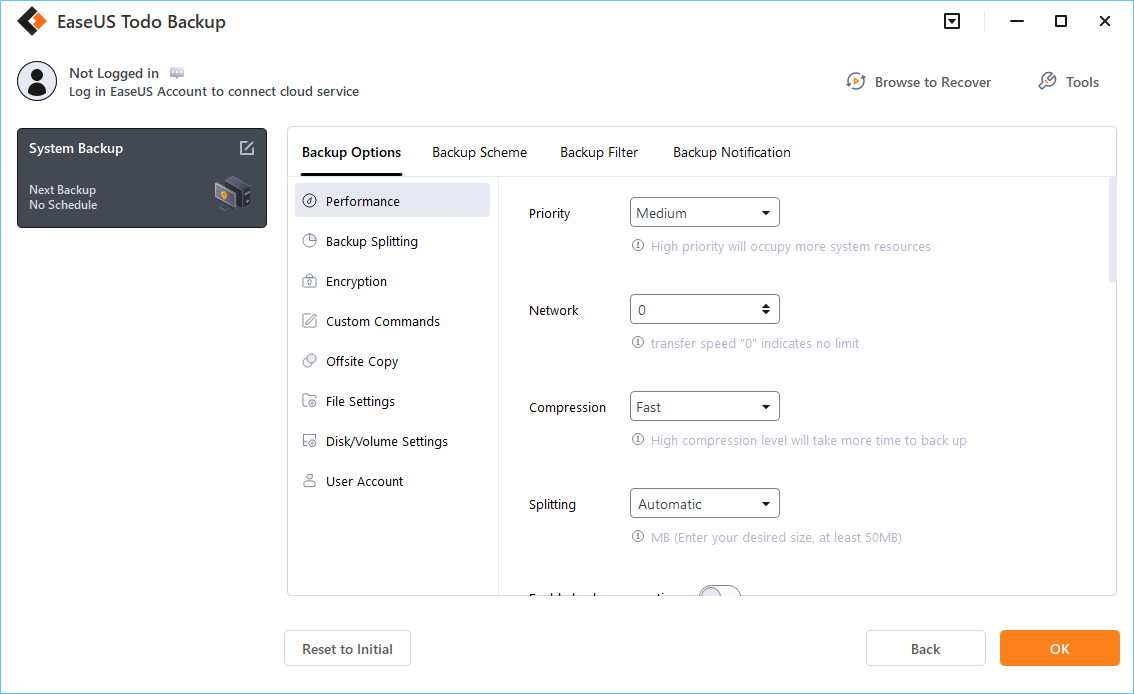
Step 5. You can store the backup file either on your computer, in EaseUS's cloud service, or on a network-attached storage device (NAS).

Step 6. EaseUS Todo Backup enables customers store backup copies of their files on a third-party cloud drive or on the company's own cloud storage.
If you want to back up your data on a third-party cloud drive, select Local Drive and scroll down to add Cloud Device. Then fill in your account information.
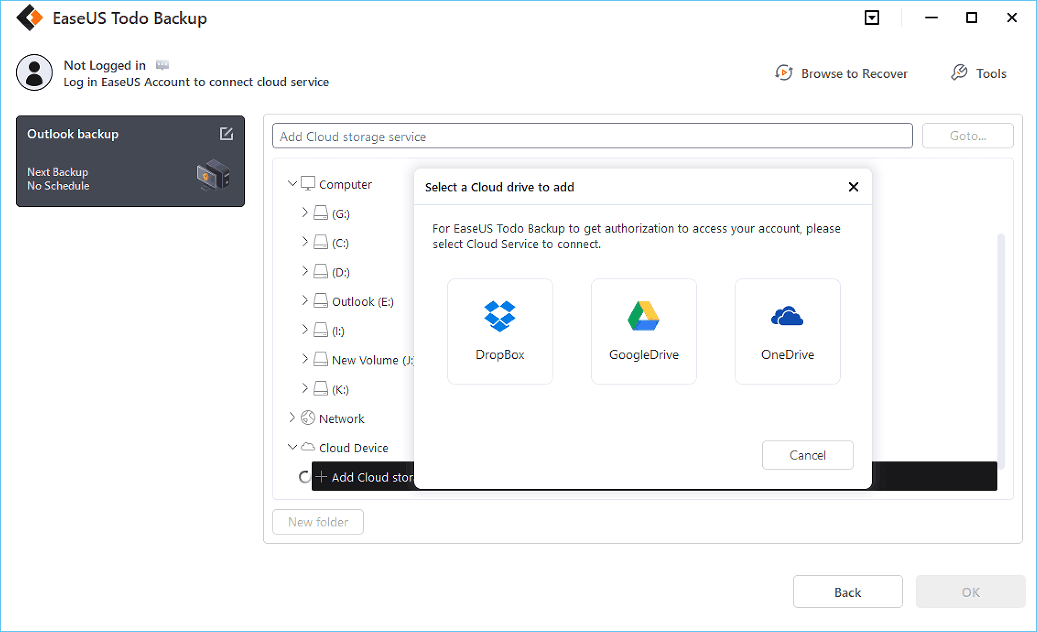
Click EaseUS Cloud, then sign up and log in with your EaseUS account if you wish to store backup files to EaseUS' own cloud storage service.
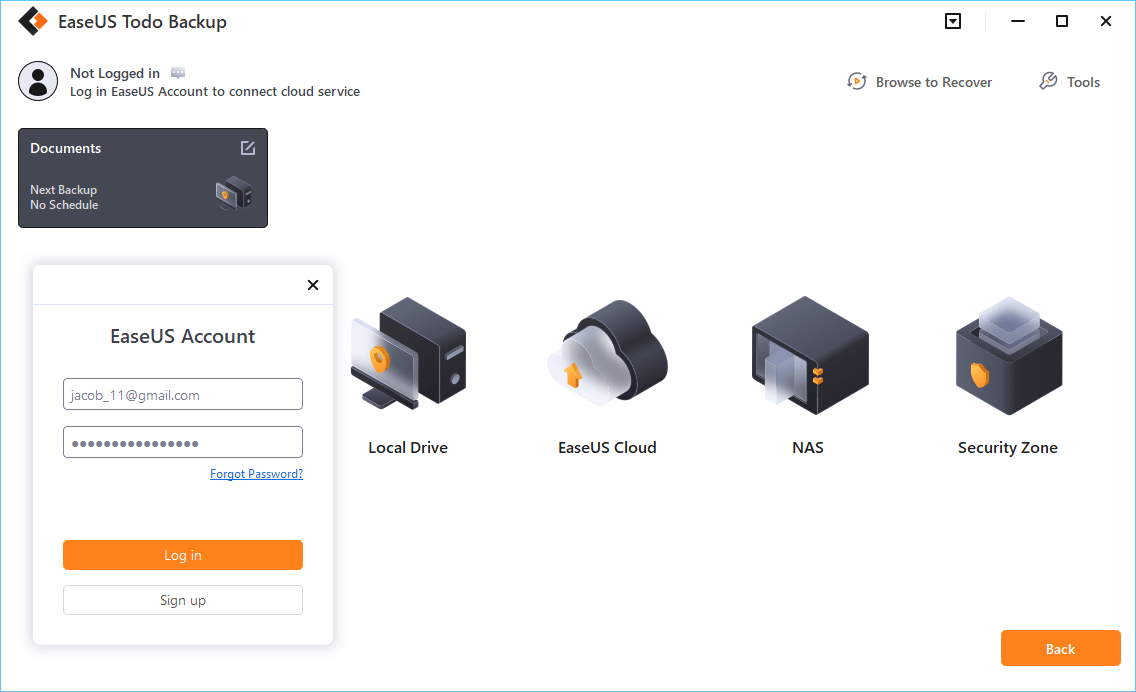
Step 7. Click on Backup Now to start a backup. When the backup process is done, it will display as a card on the left-hand side of the screen. A right-click will let you see more about how to handle the backup job in more depth.
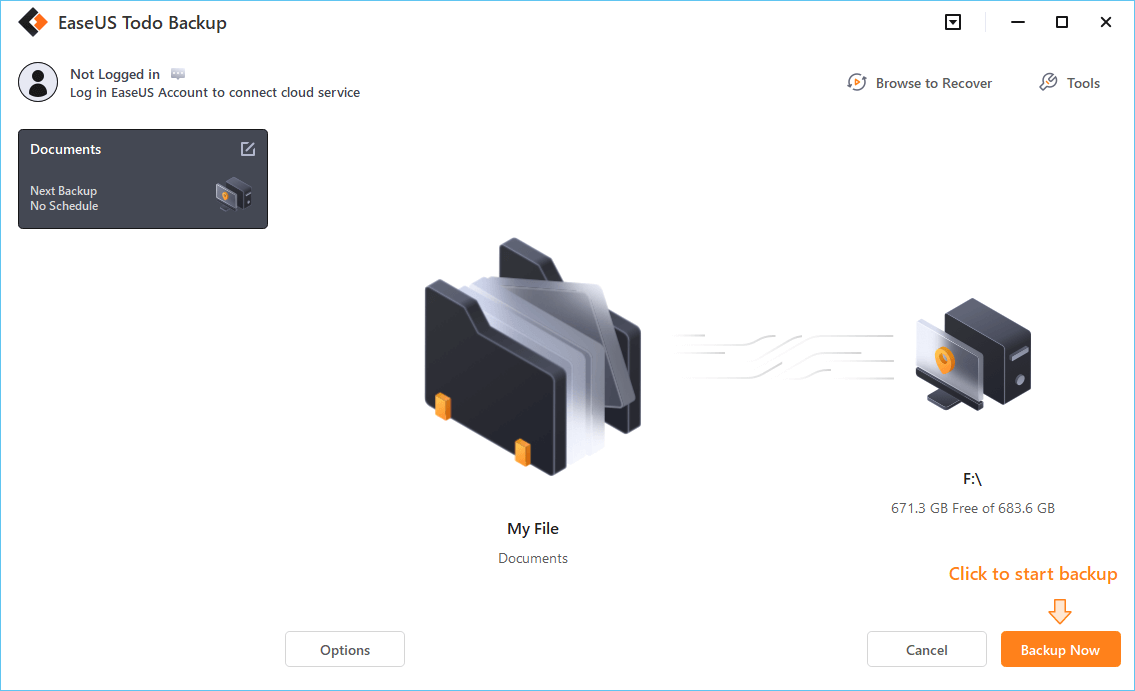
Share this article on your social media to help more people.
Method 2. Using Backup & Restore (Windows 7)
Another way to back up files on Windows 7 computers is to use Backup and Restore, a built-in Windows backup app first released in Windows 7. Unlike File History introduced in Windows 8.1, Backup and Restore allows you to back up your files, create a disk image, and create a system image on a USB drive. Here is how to go for it:
Step 1. To run Windows 7 Backup and Restore, click Start and type backup and restore into the search box, or go to Control Panel - System and Security - Backup and Restore. Then, click Set up backup.
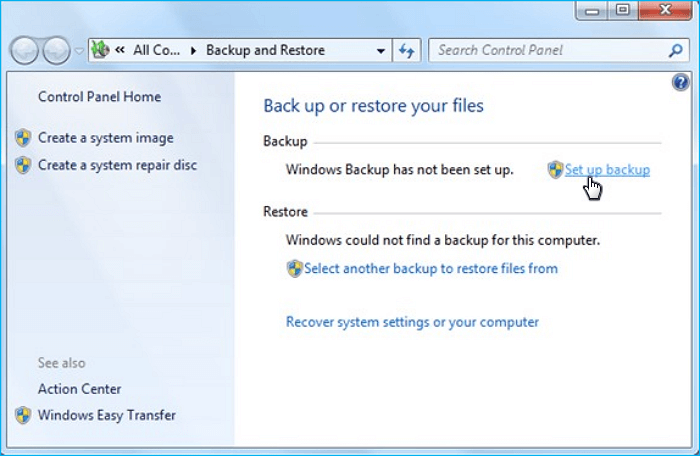
Step 2. Select where you want to save the backup. Choose the external drive connected to your Windows 7 PC as the backup disk.
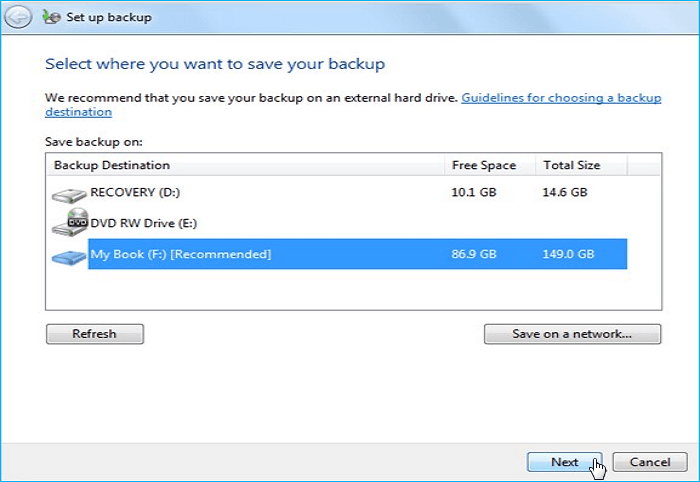
Step 3. Select Let me choose, and press Next.
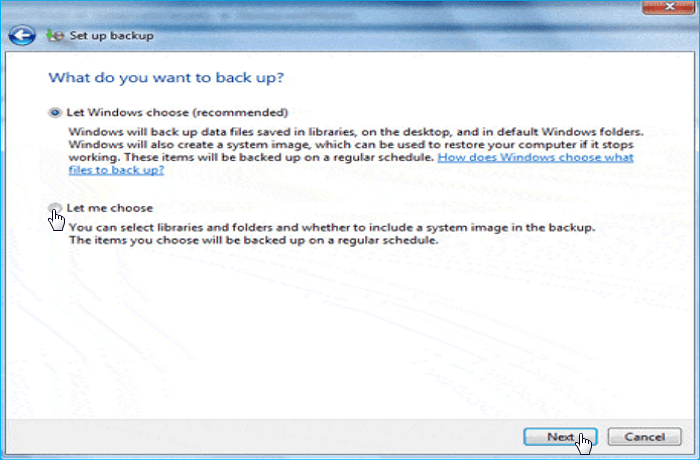
Step 4. Choose the folder or file you want to back up, and click Next.
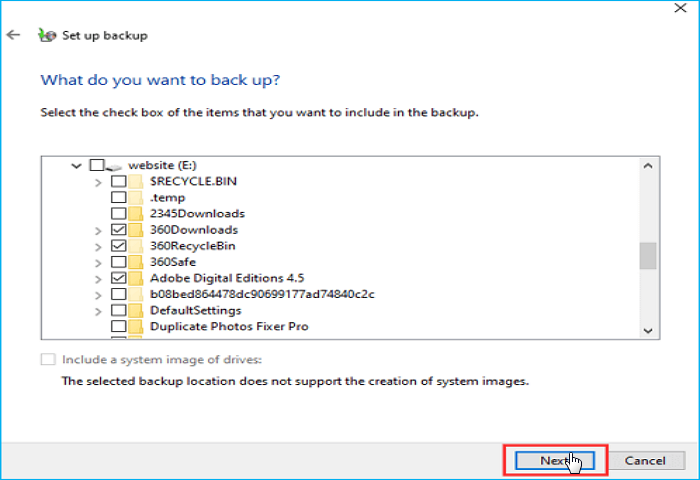
Step 5. Confirm the backup settings, and you can also click Change schedule to customize the scheduled backup according to your needs. Then, click Save settings and run backup.
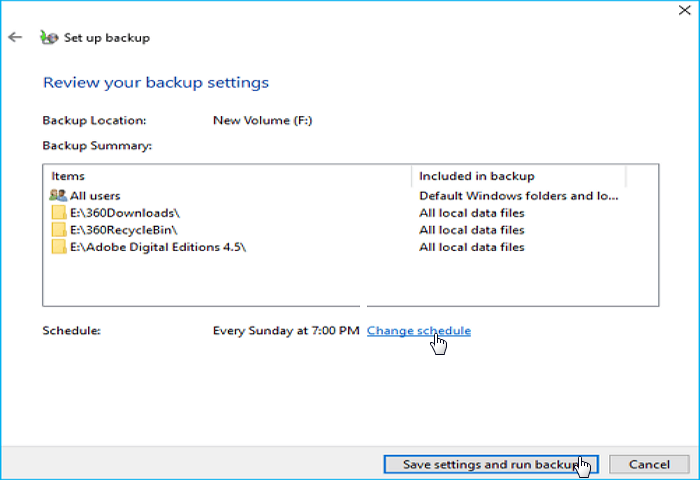
Method 3. Using Windows Easy Transfer
Windows Easy Transfer is a built-in tool for Windows 7 and 8. It can help you back up data, like settings, user accounts, taskbar options, emails, documents, and pictures, and transfer it from one hard drive to another or computer to another. Here are the detailed steps:
Step 1. Click Start Menu, and type Windows Easy Transfer in the search box. Then, open Windows Easy Transfer.
Step 2. Click Next when the Windows Easy Transfer window opens.
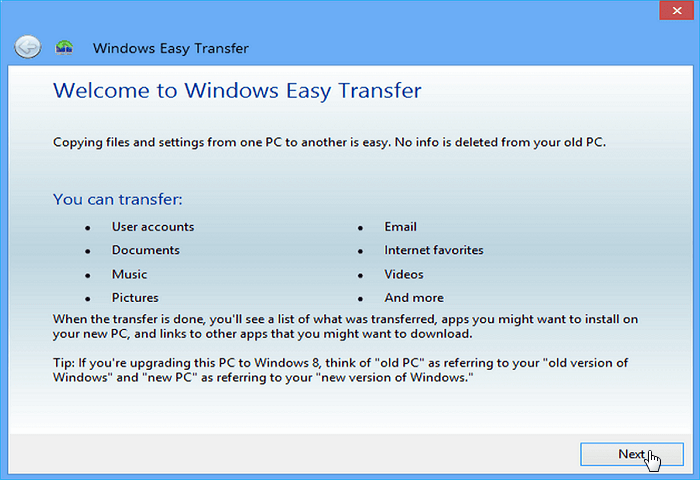
Step 3. Pick An external disk or USB flash drive.
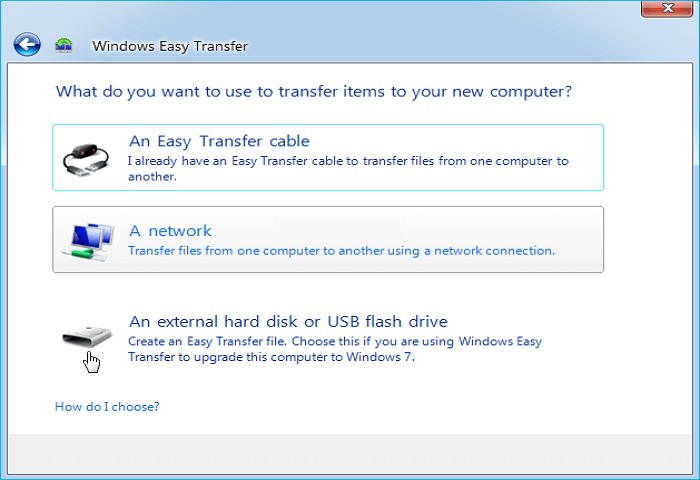
Step 4. Choose This is my old computer.
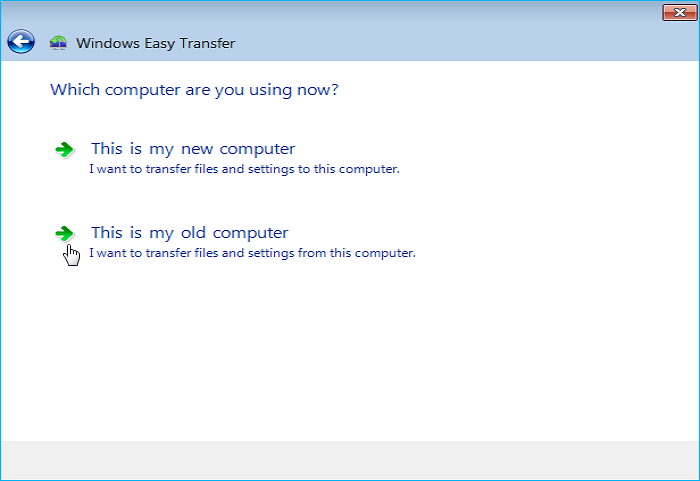
Step 5. The tool will check all files supported in Windows 7, choose the files you want to back up, and click Next.
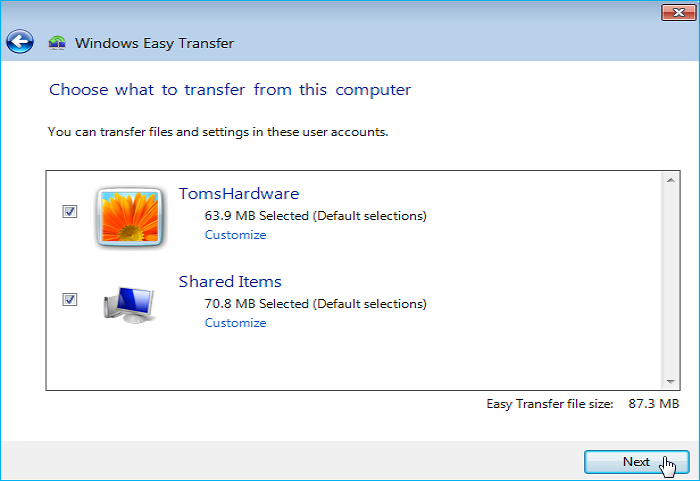
Step 6. Set a password for the backup image, and click Save.

Step 7. Select the external disk connected to your Windows 7 PC and click Save to back up files to it.
Step 8. Press Next, and you'll be prompted with a message where the file backup image is stored.
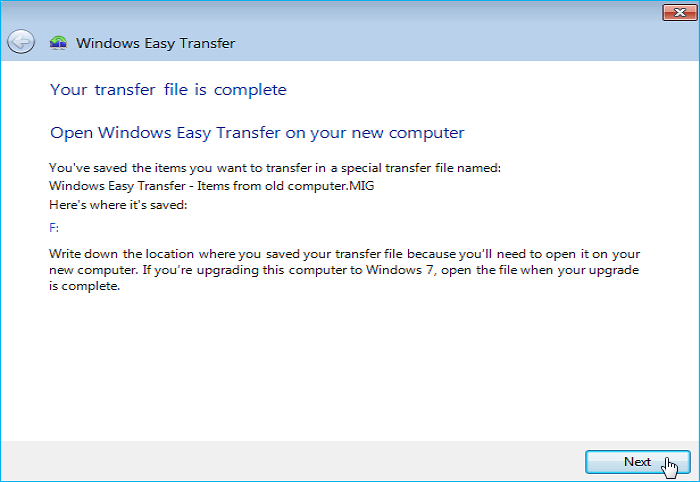
Step 9. When it is done, click Close to exit the tool, and you can go to your new Windows computer to transfer these files to it.
Method 4. Manually Copying and Pasting
The last method to back up files on a Windows 7 computer is to manually copy and paste files from your computer to an external hard drive. This is the simplest way to do so and requires no computer skills. The following are the detailed steps:
Step 1. Connect the external disk drives to your Windows 7 computer.
Step 2. Go to File Explorer and find the external drives.
Step 3. Right-click on the files or folders you want to back up and select Copy, or click it and press the Ctrl + C keys.
Step 4. Go to the external drive. Then, hold the Ctrl + V keys simultaneously, or right-click on it and select Paste.
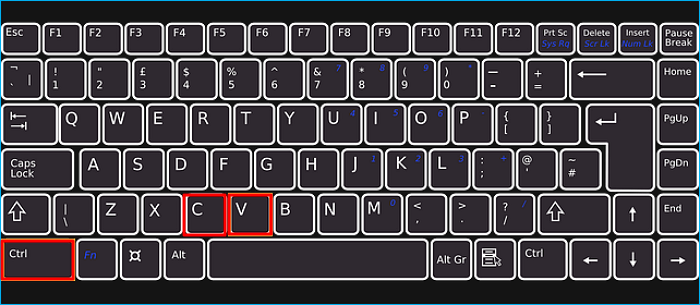
Step 5. Repeat the process until you back up all files to the external drive.
To Wrap Things Up
That is all about how to backup files in Windows 7 to external hard drive. You can create a backup of your data on a Windows 7 computer to an external disk using professional Windows 7 backup software - EaseUS Todo Backup or the Windows 7 built-in tools and using the manual copy and paste method.
It is worth noting that if you want to create a scheduled backup while compressing backup sizes, EaseUS Todo Backup is your best choice. It can help you back up, clone, and image your hard drive on your Windows computer and create a WinPE bootable disk if you encounter boot issues. It has many features to meet your different needs. Download to explore it as soon as possible!
Secure Download
FAQs on How to Backup Files in Windows 7 to External Hard Drive
1. How to backup entire computer to external hard drive Windows 7?
To backup your entire Windows 7 computer to an external drive, the best and easiest way is to use professional backup tools like EaseUS Todo Backup. It can help back up almost everything on your computer while having fewer limitations.
2. How do I automatically backup a folder in Windows 7?
To automatically back up files or folders in your Windows 7 PCs, you can use Backup and Restore or auto backup software like EaseUS Todo Backup to set a scheduled backup on a daily, weekly, or monthly basis.
3. How do I transfer everything from my old Windows 7 computer to my new Windows 10 computer?
You can utilize the Windows backup and restore feature to help you create a backup of your Windows 7 computer and then restore it to your Windows 10 computer. Furthermore, you can clone your hard drive on your Windows 7 computer to a hard drive on your Windows 10 computer. This is because cloning can help you copy data from one hard drive to another without losing data or reinstalling Windows. EaseUS Todo Backup can let you back up your files or clone your hard drive without trouble.
Was this page helpful? Your support is truly important to us!

EaseUS Todo Backup
EaseUS Todo Backup is a dependable and professional data backup solution capable of backing up files, folders, drives, APP data and creating a system image. It also makes it easy to clone HDD/SSD, transfer the system to different hardware, and create bootable WinPE bootable disks.
Secure Download
-
Updated by
"I hope my articles can help solve your technical problems. If you are interested in other articles, you can check the articles at the bottom of this page, and you can also check my Facebook to get additional help."…Read full bio
EaseUS Todo Backup

Smart backup tool for your files, disks, APPs and entire computer.
Topic Clusters
Interesting Topics
